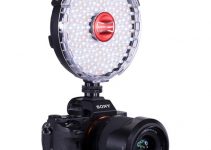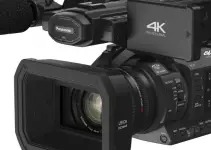Apple gave us a lot to unpack when they finally released a series of Macs using their custom-designed M1 processors. We now have a MacBook Air, 13” MacBook Pro, and a Mac mini to choose from – all of which have practically the same M1 chip. The other part of the presentation was heavy on big promises on performance per watt with charts that, unfortunately, lacked any practical comparisons or data for us to dive into. So, are they as good as Apple says?
Alex Jordan of Learn Color Grading was able to try a real-world test using DaVinci Resolve 17.1, which does support the M1 processors. He went for one of the hardest tests available to filmmakers today: 8K REDCODE RAW video editing.
Using a Mac mini equipped with the M1 with an 8-core CPU and 8-core GPU, 8GB unified memory, and 256GB SSD. This is the base model. While this is very, very similar to the other Macs the fact that the Mac mini has a fan and better cooling setup will allow Apple to squeeze a bit more performance out of the M1 chip.
Now, Jordan prefaces the video by saying he is going through all these tests while recording, so even he doesn’t know what exactly is going to happen as he goes through.
He downloaded some REDCODE RAW files and put them in a timeline. It’s a mix of 4K, 5K and 8K resolutions. Each is then put down twice, the first being the plain clip with no effects and the second version using one node with color adjustments.
Making sure that proxies and optimized media is turned off we should see how it handles the raw footage. This includes timeline proxy mode and render cache. There is no way the system is using any tricks to play back the footage. It’s all processing power.
The first test is to simply play the 4K raw footage. And… it works! The M1 chip seems to be able to smoothly handle the footage without issue. Same results with the graded version of the clip. Moving to 5K there were some early stutters, but that was resolved when trying to play the clip again. The graded version played okay as well.
On to 6K! Again, it was playing the 6K raw very smoothly. Even with color effects it was playing in real time. 8K was the final test today and it was the first one that showed any stuttering. Still, this is incredible performance for a Apple’s M1 chip and an amazing sign of what may come in the future. Keep in mind, a screen recorder is running in the background which does borrow some processing power.
Going back to the 8K footage, which is having minor stuttering trying to play back in 8K with no optimizations, Jordan simply puts Resolve into half resolution for the timeline. If you are working with 8K footage you probably don’t need to watch it in full resolution. You probably don’t even have an 8K display. After dropping the resolution the 8K raw played just fine.
Jordan confirms this is a real raw file and tries the 8K files again in half res with color grades applied. Still works. All told that’s not a big loss to work on 8K REDCODE RAW footage with grading and anything less will do just fine.
This is a base model Mac mini and it uses the same chip as in a MacBook Air. That’s wild.
How far can we push it?
Adding another node and a window to the 8K footage and then a desaturate effect and it still runs smoothly. Even Jordan is surprised as to how well this performs.
Turning off the optimizations he goes back to the 4K raw file, adds another node and makes some crazy adjustments. Then tosses on another node with a window and some contrast. Then he tracks the window. It actually tracked a 4K RED file in real time with tons of color effects applied.
The 6K footage is likely the border when you add nodes, so he adds another node to that with color then another node with a window and tracking. It also was very, very good.
The Mac mini sells for only $699 and is able to edit 8K raw footage with some basic optimizations. That is astounding and seriously changes the game when it comes to video editing. You’ll probably end up spending way more money on storage and/or a display than the computer itself. You can keep the money in your actual project.
REDCODE RAW is known for being tough on systems, but I would like to see what happens with a variety of other difficult formats in the future.
I’m likely going to sit out this wave of Apple Silicon Macs, but I think I’m convinced that it is the future now. After we get true support from Adobe and a next-gen chip I don’t think I can’t get a new Mac.
Meanwhile, if you find this video useful and want to celebrate this year’s Black Friday, you can also check out the Ultimate Resolve Course Bundle by Alex and his team that includes a dozen comprehensive video editing and color grading courses covering the ins and outs of video editing and color grading with the latest DaVinci Resolve.
The bundle is heavily discounted right now selling for just $97. Hurry up as the sale ends Monday, November 30th at 11:59 pm PT.
[source: Learn Color Grading]
Order Links:
- Blackmagic Design DaVinci Resolve 17 Studio (B&H, Amazon)
- Apple MacBook Air w/ M1 Chip (B&H, Amazon)
- Apple MacBook Pro w/ M1 Chip (B&H, Amazon)
- Apple Mac mini w/ M1 Chip (B&H, Amazon)
Disclaimer: As an Amazon Associate partner and participant in B&H and Adorama Affiliate programmes, we earn a small comission from each purchase made through the affiliate links listed above at no additional cost to you.



